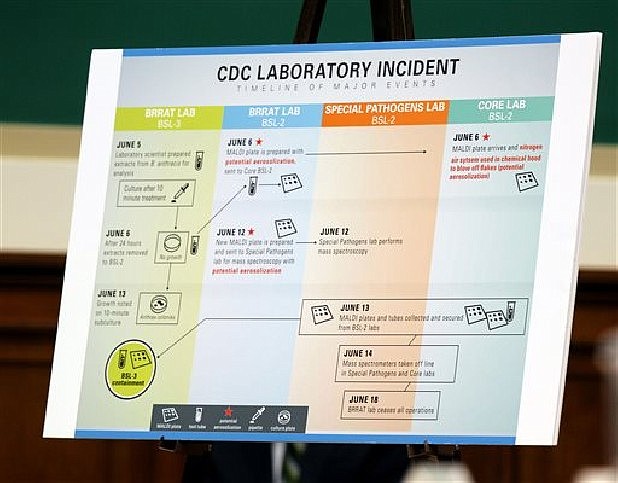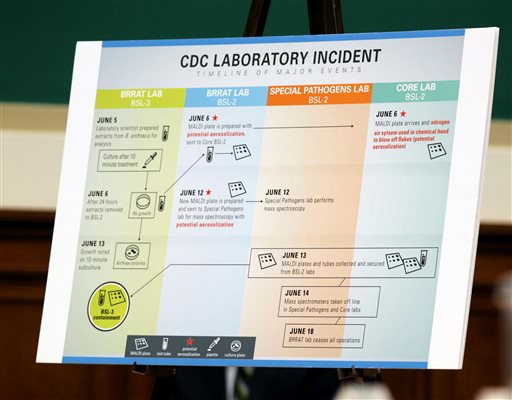ONLINECDC page on anthrax incident
NEW YORK - The head of the government lab that potentially exposed workers to live anthrax has resigned, an agency spokesman said Wednesday.
Michael Farrell was head of the Centers for Disease Control and Prevention lab since 2009. He submitted his resignation Tuesday, the spokesman said.
Farrell declined interview requests, said the spokesman, Tom Skinner.
Farrell was reassigned following an incident last month at an Atlanta lab that handles bioterrorism agents. The lab was supposed to completely kill anthrax samples before sending them to two other CDC labs that had fewer safeguards. But the higher-security lab did not completely sterilize the bacteria.
Dozens of CDC workers were potentially exposed to anthrax. No one got sick. But an internal investigation found serious safety lapses, including use of an unapproved sterilization technique and use of a potent type of anthrax in an experiment that did not require a live form of the germ.
Skinner declined to answer questions about what blame has been placed on Farrell in the events that led to the error. He also did not say whether Farrell was asked to resign.
The CDC fell under a harsh spotlight following the incident and the subsequent disclosure of another safety breach at the agency's vaunted influenza laboratory. In that incident, relatively harmless bird flu virus was accidentally contaminated with a much deadlier strain. The contaminated virus was then sent to a lab run by the U.S. Department of Agriculture. The contamination was discovered in May, but the incident was not reported to CDC's top management until last week.
No one has been reported infected. But CDC Director Tom Frieden has said the second incident was particularly worrisome because flu, unlike anthrax, is a germ that can potentially spread easily from person to person.
Frieden said the two incidents forced agency officials to recognize that a number of safety lapses - which had been treated as isolated accidents - were actually signs of systemic safety problems in the CDC laboratories that handle dangerous germs.
Frieden closed the anthrax and flu labs, halted exports from other high-level labs, and kicked off an analysis that is to include appointment of an external panel of experts.

